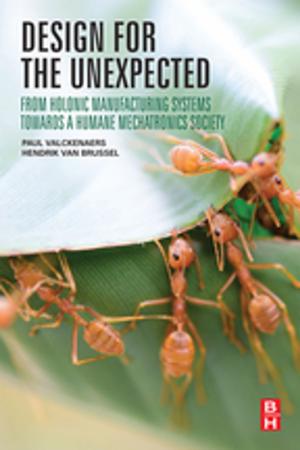Physiology of Ticks
Current Themes in Tropical Science
Nonfiction, Science & Nature, Science, Biological Sciences, Zoology| Author: | ISBN: | 9781483162348 | |
| Publisher: | Elsevier Science | Publication: | October 22, 2013 |
| Imprint: | Pergamon | Language: | English |
| Author: | |
| ISBN: | 9781483162348 |
| Publisher: | Elsevier Science |
| Publication: | October 22, 2013 |
| Imprint: | Pergamon |
| Language: | English |
Physiology of Ticks focuses on the unique (and probably the most vulnerable) features of tick physiology and the physiological aspects of tick interactions with their hosts. The mechanisms used by non-feeding ticks to maintain their water balance are examined, along with the salivary mechanisms used by feeding ixodid ticks for excreting the enormous excess volumes of water and salts taken in during blood sucking.
This book is comprised of 13 chapters and begins with a description of the morphology, deposition, and components of the tick cuticle. The discussion then turns to humidity relationships and water balance of ticks, as well as the sensory basis of tick feeding behavior and the immunological basis of host resistance to ticks. Subsequent chapters explore blood digestion in ticks; tick reproduction, with emphasis on sperm development, cytogenetics, oogenesis, and oviposition; effects of insect hormones and their mimics on tick development and reproduction; and the mechanisms of tick pheromones. The final chapter deals with diapause and biological rhythms in ticks.
This monograph will be of value to entomologists, physiologists, biologists, and practitioners of tropical science.
Physiology of Ticks focuses on the unique (and probably the most vulnerable) features of tick physiology and the physiological aspects of tick interactions with their hosts. The mechanisms used by non-feeding ticks to maintain their water balance are examined, along with the salivary mechanisms used by feeding ixodid ticks for excreting the enormous excess volumes of water and salts taken in during blood sucking.
This book is comprised of 13 chapters and begins with a description of the morphology, deposition, and components of the tick cuticle. The discussion then turns to humidity relationships and water balance of ticks, as well as the sensory basis of tick feeding behavior and the immunological basis of host resistance to ticks. Subsequent chapters explore blood digestion in ticks; tick reproduction, with emphasis on sperm development, cytogenetics, oogenesis, and oviposition; effects of insect hormones and their mimics on tick development and reproduction; and the mechanisms of tick pheromones. The final chapter deals with diapause and biological rhythms in ticks.
This monograph will be of value to entomologists, physiologists, biologists, and practitioners of tropical science.















